Gaming’s biggest event of the year, the Electronic Entertainment Expo in Los Angeles, has now come and gone, leaving us with a basket full of anticipation for the release of some hard hitting titles. In this special feature we pick out the best and most interesting games of the show for what you should be playing this year and next.
The Legend of Zelda (Wii U; Nintendo)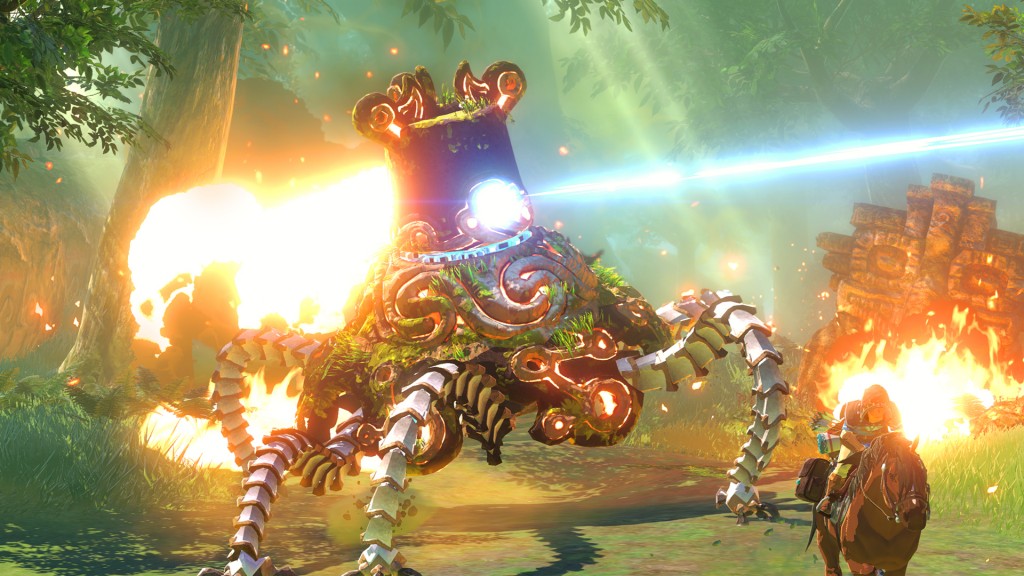
Anticipation was certainly high for the next entry in Nintendo’s beloved Zelda franchise after we were promised a reveal last year, and Nintendo sure delivered. With a magical snap of his fingers, Aonuma showed us a vast, open world drawn in a fusion of art styles coming from Skyward Sword and The Wind Waker. The footage, which was confirmed later to be actual gameplay, showed Link on a horse being ambushed by a monster, then following the chase until Link jumps off his horse and fires the most technologically advanced arrow we’ve seen in a Zelda game.
While The Legend of Zelda as a series may not be as important or relevant these days, with so many games that have used its themes but surpassed it in terms of gameplay, for the core Nintendo fans who were still holding out on picking up a Wii U this is the game that’s going to tip them over.
It may not be coming for over a year yet, but expect the Wii U to properly take off when this beauty comes around.
No Man’s Sky (PlayStation 4; Hello Games)
No Man’s Sky, from UK based indie developer Hello Games, was one of the standout highlights from Sony’s press conference; presenting a vast universe to explore with a very unique graphical style. The main focus of the game, as presented in its E3 trailer, seems to be on exploring the planets you come across, registering new materials and creatures into a vast database. It’s all procedurally generated too, which means that the universe you play in is randomly created and will always be different in a fresh playthrough.
There’s a lot of potential in this title to become a relaxing and fulfilling experience that constantly impresses in its beauty and variety; and it needs that variety and procedural generation to keep players coming back. With a lot of sandbox or toy-like games keeping hold of the player’s attention over a long period of time is a major issue to tackle in the design, and as we’ve seen games like Minecraft use procedural generation well to battle this, No Man’s Sky should do well.
There’s also the social aspect, where you can share planet characteristics and life forms with others, and with Twitch streaming on the PlayStation 4 the avenue for presenting all of these random universes is huge.
No Man’s Sky looks fun, relaxing and has the potential to become a PlayStation indie hit. This is definitely one to keep your eye on.
Nintendo’s New IP
Splatoon (Wii U; Nintendo); Project Giant Robot (Wii U; Nintendo); Project Guard (Wii U; Nintendo); Code Name: S.T.E.A.M (3DS; Nintendo, Intelligent Systems)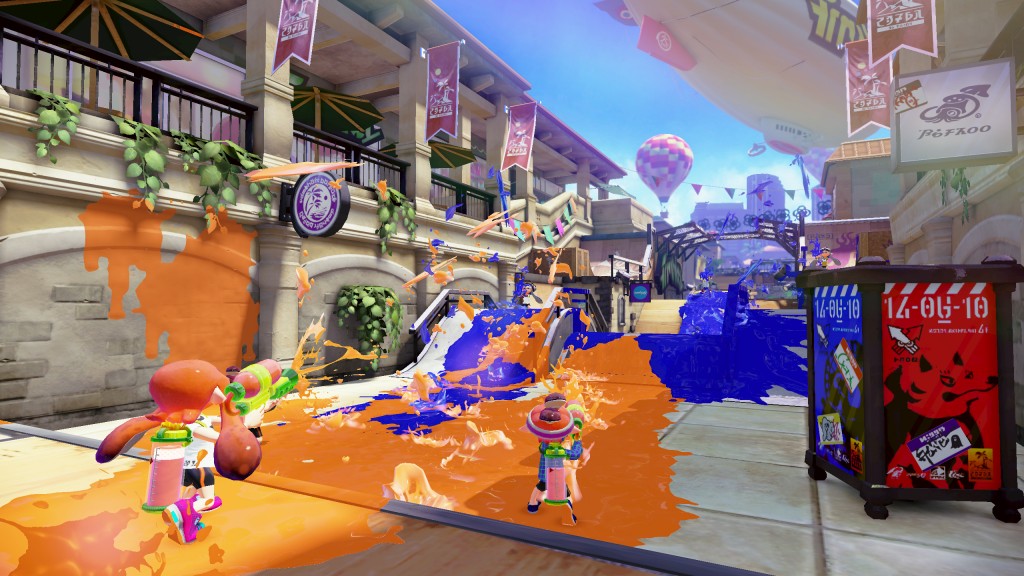
It’s become a regular complaint of Nintendo fans that there has been a lack of new IP (intellectual property) from the big N of late. Which is quite wrong to say as there have been new things coming but not of something that has really made it big.
Coming to change all that is the first of four new properties that Nintendo are working on, Splatoon. This gem is a 4v4 third person paintball game, featuring a band of squid girls trying to cover the arena with as much of their team’s colour of paint before time runs out. Now this is something different, and in the multiplayer shooter space is a breath of fresh air against the yearly updates of the likes of Call of Duty and Battlefield. It’s bright, colourful and cartoony, and looks extremely fun to play, even for those who detest shooters. This was being plugged heavily during Nintendo’s E3 coverage, so they have high hopes of it being successful across a mass audience. If the game can pull that off, this could be the Wii U’s first original hit.
On the side of this, Shigeru Miyamoto had two projects of his own to reveal: Project Giant Robot and Project Guard. The first is a game in which you take command of a customisable giant robot with the gamepad, tilting and twisting to knock down enemy robots before they get you. The game mechanics work similar to sumo, in that you’re trying to get your opponent down on the ground. The customisation options appear to be nice and varied, with a range of parts that can be resized that effect your robot’s speed, balance and power – so big feet increase your robot’s balance but lower its walking speed.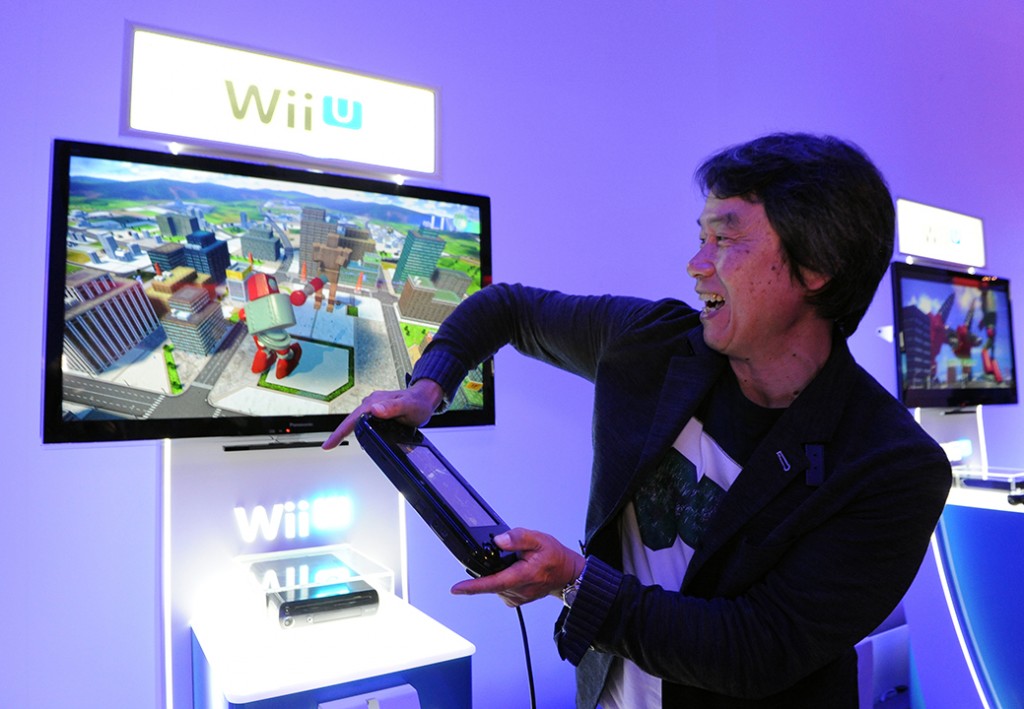
Project Guard on the other hand, is a social tower defence game. Your base is a maze of walls that’s under attack from an army of robots, and you have to place twelve cameras around your base strategically so you can see where the robots are coming in, and offer the best points to attack from. These twelve cameras are displayed all together on the TV screen like a security room, where the idea is that friends and family help you out by shouting out around which camera the robots are. It sounds like a great idea for a party game, and judging by the E3 demo is quite challenging too. Incredibly the idea for this has been around since the Nintendo 64 days, with Nintendo biding their time until they had the right technology to implement it. While that time has come, the only worrying thing is that they may have missed their chance when games involving groups of people gathering round the TV boomed in the Wii days.
While both of these projects sound like interesting ideas, because they are so simple they feel like they would be best suited to digital-only releases or being included in a mini-game compilation.
Finally we have the new 3DS title Code Name: S.T.E.A.M., which is a turn based strategy game featuring elements from third person shooters. Developed by Intelligent Systems, who are known for their strategy and RPG titles, you can say this one is in safe hands. S.T.E.A.M. stands for Strike Team Eliminating the Alien Menace, a band of heroes gathered together by US President Abraham Lincoln, who of course all use steam-based weaponry. Its gameplay is comparable to games like XCOM and Valkyria Chronicles, but whether this type of game will play well on 3DS remains to be seen, so while it is certainly one to watch, the hardware limitations may catch up with it.
Alien: Isolation (Multi-Platform; Sega, The Creative Assembly) 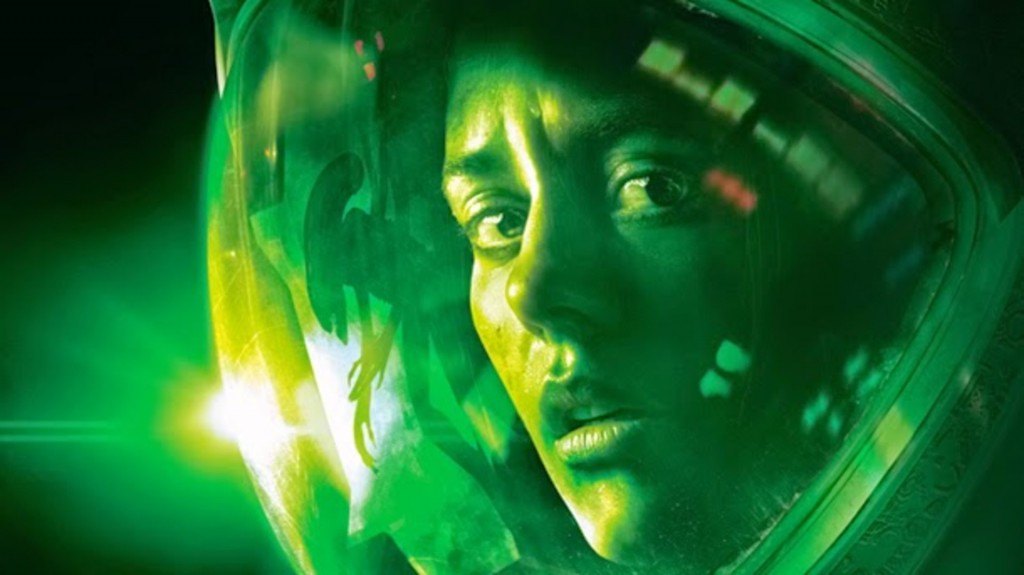
The Creative Assembly isn’t a stranger to console titles, with both the main UK studio and their former Australian branch helming titles such as Spartan Total Warrior, Stormrise and Viking: Battle for Asgard, but it’s their first time trying their hand at survival horror with the latest game entry in the Alien franchise. After the badly received Colonial Marines, Isolation offers a chance for Sega to bounce their holding of the Alien license back, and so far things look on track for this to happen.
You play as Amanda Ripley, investigating the space station Sevastopol to find the flight recorder of Nostromo. The one catch though, is that an Alien lurks inside. This isn’t the action-oriented survival horror in the vein of Resident Evil – you can’t even kill the Alien. Instead you have to stealthily avoid its paths as you creep around the space station. And in an age of survival horror that has taken this action-oriented approach, it’s refreshing to see a title that attempts to go back to the genre’s roots and keep to creepiness and fear.
One thing that does stand out, despite its constant criticism within the Total War franchise, is the pulling together of the studio’s AI talent to create an enemy that constantly surprises you in being reactive rather than just traversing set paths. The Alien is designed to actively track you down and respond to the actions you perform in the game world; and it’s something that the developers themselves have said that catches them out and makes the testing process of the game more difficult.
This title is something brand new for The Creative Assembly, and with their good track record it’s going to be interesting to see how this one turns out.
Ori and the Blind Forest (Xbox One; Microsoft Studios, Moon Studios)
From its opening E3 trailer, the one thing that stood out about Ori and the Blind Forest was its artistic beauty. If Ni no Kuni was Studio Ghibli made into a 3D JRPG, then this is the spirit of Ghibli in a 2D platformer. The amount of detail packed into the screen looks amazing, with lush forests taking shape with vivid greens and browns, flowers dotting the undergrowth and a sense of depth with the backgrounds fading away into the distance.
That said, it feels like other things too – particularly the modern Rayman titles in art, and keeping to the traditions of 2D platformers in gameplay. Journalists on the show floor reported a rather simple combat system with the focus mainly on exploration, but that’s not a bad thing. After all, the joy of platformers is exploration and getting successfully to one point to the next, not necessarily taking out all the bad guys.
If you’re looking for something different on Xbox One than your overly enthusiastic military shooter or next spin-off of that western RPG franchise, this could be just what you want – a beautiful, refined piece of entertainment. We’ll see if it lives up to this promise when it’s released later this year.
Scalebound (Xbox One; Platinum Games)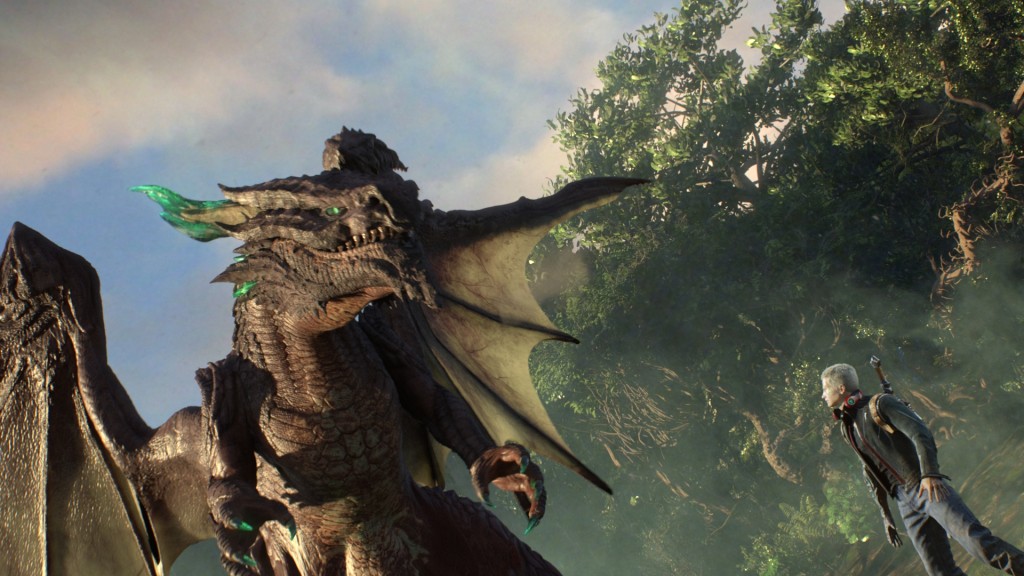
Platinum Games announcing an Xbox One exclusive was certainly a surprise, not at least in the form it takes. We were only blessed with a CG trailer, but from what we saw there’s a vicious world presented with a host of mythical monsters to kill. Dragons are the centrepiece of the game, with Platinum wanting to “create the dragon game we’ve always dreamed of”.
The hero of the tale at the moment seems slightly dubious: a cocky, upstart young man with a head for adventure who sticks on headphones and can assimilate the powers of a dragon. We’ll see if it’s a character that’s easy to connect with, but anime fans will probably notice the headphone superpower concept from the Hamatora anime and manga property.
It sounds interesting as a concept, that’s for sure, but we’ll have to wait to see what this one is going to turn out like.
Entwined (PlayStation Platforms; Sony Computer Entertainment, PixelOpus)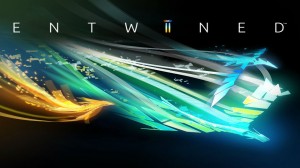
Smaller, indie-style games continued their strong showing at the big press conferences with Entwined, a rhythm game developed by a team of game graduates grouped together as new ‘young-talent’ Sony studio PixelOpus. It tells the tale of two souls, a bird and a fish, that are in love but can’t be together. Players control the creatures independently using the dual analogue sticks, hitting the correct coloured objects at the right time. Bringing the creatures together over the course of the game causes them to merge into a dragon.
The concept itself isn’t particularly noteworthy, as there are plenty of awesome rhythm games available, but like other indie games present at E3 this year, turns it into a work of art. It has quite an abstract style that’s awash with colour, and at times is reminiscent of ice skating performances.
Presenting such a game by this batch of young developers shows that Sony (as well as Microsoft) has faith and is investing in young, independent talent that is pushing the boundary of games in surprising ways.
Entwined is available now on PlayStation 4 if you want to witness this beauty for yourself, and is scheduled to come to PlayStation 3 and PlayStation Vita at a later date.
Valiant Hearts: The Great War (Multi-Platform, Ubisoft)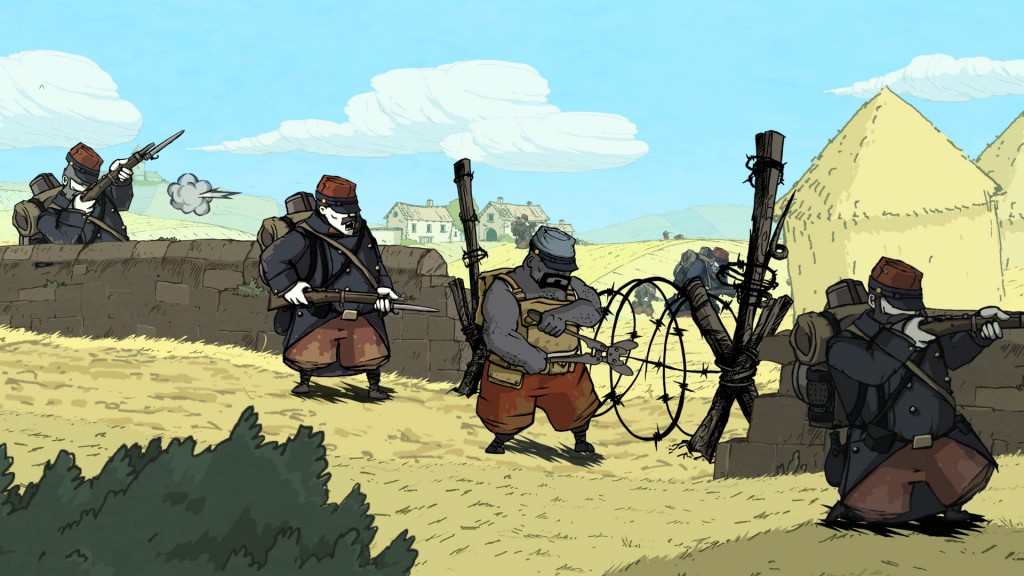
Another surprise, and the final game in this feature, comes from Ubisoft. Inspired by 100th Anniversary of the beginning of World War I, Ubisoft Montpellier have created this 2D puzzle adventure game inspired by the letters written during the conflict. Four strangers enter the battlefield in order to reunite a German soldier with his lover.
With the events of both World Wars typically covered in military first person shooters, it’s refreshing to see a respectful and unique take on history. The E3 demo revealed the main gameplay, in which solving specific puzzles moves the story forward; all to a good degree of historical accuracy as you move your way through the battlefields. The ones shown were rather simple, like distracting guards and blowing up objects to find alternative paths, but we are promised a nice difficulty curve.
And this is another artistic title, using the UbiArt Framework, the graphical engine originally built for Rayman Origins. We’ve already seen it put to good use outside of Rayman with Child of Light, and this is looking like another title in which the engine offers the developers to create something that we haven’t seen before for this time period.
This one’s coming out very soon on all non-Nintendo platforms, so you won’t have long to wait to get your hands on this promising title.
And that brings our picks to a close. There’s a lot more great games on the way, but we felt that this lot showcased the best of an E3 that felt rather typical and underplayed.
